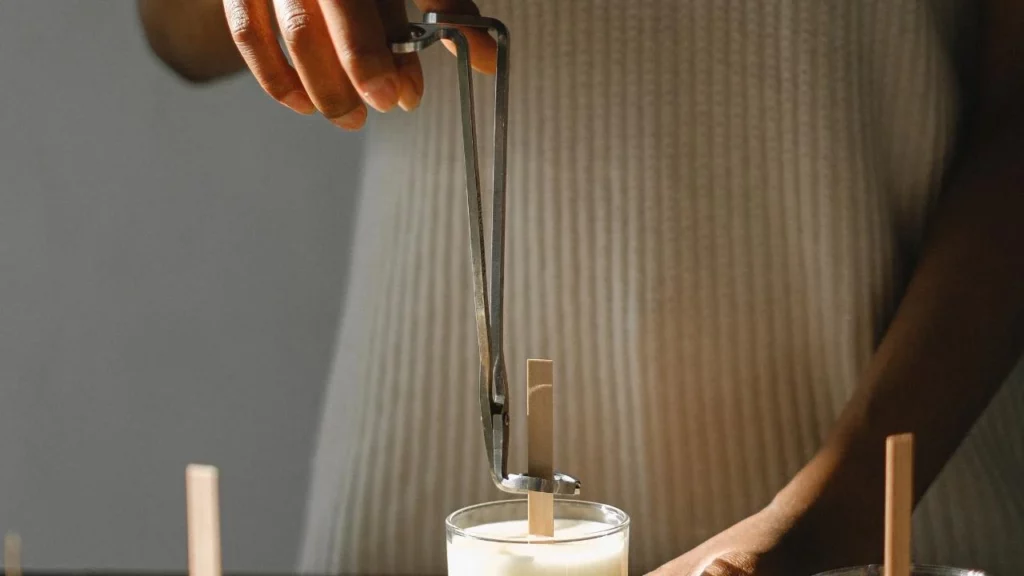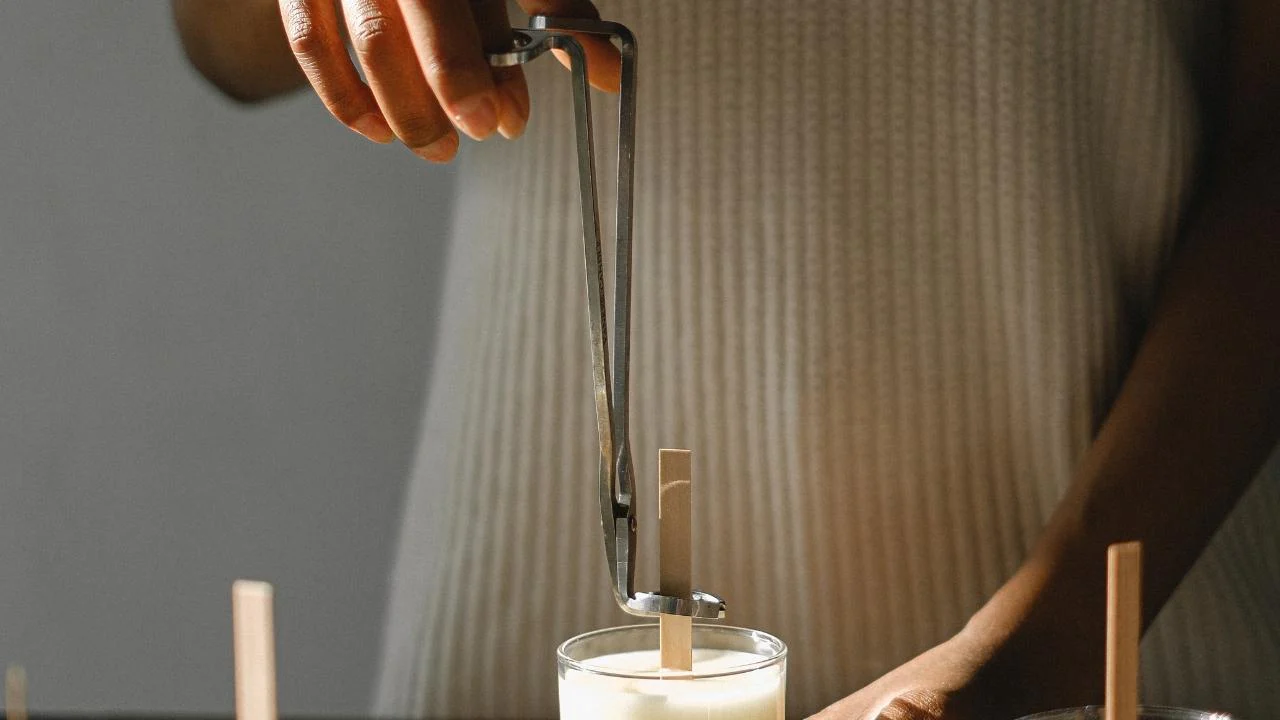Candle making is a popular hobby that allows crafters to express their creativity and create beautiful, fragrant candles. However, to ensure successful candle making, it is essential to have the right supplies, particularly high-quality candle wick supplies. Understanding the importance of these supplies, the different types of wicks available, and the necessary tools for handling them is crucial for any candle maker. In this article, we will explore the essential candle wick supplies that every crafter should have.
Understanding the Importance of Quality Candle Wick Supplies
When it comes to candle making, the candle wick plays a significant role in determining the overall performance and appearance of the candle. A quality candle wick supplies ensure that your candle burns evenly, emits a pleasant scent, and remains stable throughout its burn time. Using inferior wicks can lead to issues such as tunneling, poor scent throw, and an unstable flame. Therefore, investing in high-quality candle wick supplies is vital for achieving professional-looking candles.
Quality candle wick supplies are not only essential for the functionality of the candle but also for the safety of the user. A properly sized wick will help control the rate at which the candle burns, preventing overheating and potential hazards. Additionally, a well-made wick will reduce the risk of the candle producing excessive smoke or soot, which can lead to respiratory issues and staining of surrounding surfaces. Click here for choosing the right candle wicks for different types of candles.
The Role of Candle Wicks in Candle Making
Candle wicks are the heart of any candle. They are responsible for fueling the flame and ensuring the candle burns properly. The wick absorbs the liquid wax and transports it to the flame, where it vaporizes and produces light and heat. The size, material, and design of the wick determine how the candle burns. A well-chosen wick will create a steady flame, consume the wax evenly, and minimize smoking and sooting.
Furthermore, the length of the wick also plays a crucial role in the candle’s performance. A wick that is too short may drown in the wax, causing the candle to extinguish prematurely. On the other hand, a wick that is too long can lead to a large, flickering flame that poses a fire hazard. It is essential to trim the wick to the appropriate length before each use to ensure a safe and efficient burn.
Factors to Consider When Choosing Candle Wick Supplies
When selecting your candle wick supplies, several factors should be taken into consideration. The type of wax you are using, the size and shape of your container, and the desired burn time all play a role in determining the right wick for your candle. It is crucial to choose a wick that is compatible with your wax and container to achieve optimal burning performance.
Moreover, experimenting with different wick sizes and materials can help you achieve various effects in your candles. Thicker wicks are suitable for larger candles or those with a higher fragrance load, while thinner wicks work well for smaller candles or those with a lower scent concentration. By understanding the characteristics of different wicks and how they interact with various candle components, you can customize your candles to meet specific aesthetic and functional requirements.
Essential Candle Wick Types for Different Candles
There are various types of candle wicks available, each suitable for different candle styles and purposes. Understanding the characteristics and benefits of these wicks will help you choose the right one for your candle making projects.
When selecting a wick for your candle, it’s essential to consider factors such as the type of wax you are using, the diameter of your container, and the desired burn time. Each wick type offers unique qualities that can enhance the performance and aesthetics of your candles.
Cotton Wicks: The Classic Choice
Cotton wicks are the most commonly used wicks in candle making. They are versatile and suitable for a wide range of candle types. Cotton wicks come in different sizes, which are labeled with a series of numbers. The higher the number, the larger the wick. Cotton wicks are known for their clean burn, minimal mushrooming, and excellent scent throw.
One of the benefits of cotton wicks is their ability to work well with various types of wax, including paraffin, soy, and beeswax. They are a reliable choice for beginner candle makers due to their ease of use and consistent performance.

Wooden Wicks: For a Natural, Rustic Appeal
If you desire a unique and rustic look for your candles, wooden wicks are an excellent choice. These wicks are made from natural wood and have a distinctive crackling sound when burned. They are ideal for soy and coconut wax candles and create a beautiful ambiance. Wooden wicks are available in different widths to suit various container sizes.
Wooden wicks are eco-friendly and add a touch of sophistication to your candle designs. They offer a slower burn rate compared to cotton wicks, making them perfect for creating a cozy atmosphere during long evenings.
Specialty Wicks: For Unique Candle Designs
For more specialized candle designs, such as layered or double-wick candles, specialty wicks come in handy. These wicks are specially designed to accomplish specific effects, such as a consistent burn in layered candles or a decorative element in unique candle shapes. Specialty wicks offer endless possibilities for creative candle making.
Experimenting with different specialty wicks can elevate your candle creations to new heights. Whether you’re looking to create a visually stunning centerpiece or a custom-scented candle with multiple wicks, specialty wicks provide the flexibility to bring your imaginative candle ideas to life.
Tools Needed for Handling Candle Wicks
In addition to having a variety of wicks, it is important to have the right tools for handling them properly.
Creating beautiful and long-lasting candles involves more than just choosing the right wicks. Having the appropriate tools can make the candle-making process smoother and more efficient. Let’s explore a couple more essential tools that can enhance your candle-making experience.
Wick Trimmers: For Precise Cutting
Wick trimmers are essential tools for maintaining a proper wick length. Trimming the wick before lighting the candle helps prevent mushrooming and ensures a clean burn. It is important to trim the wick to the recommended length for your specific candle type and size.
Investing in a quality wick trimmer can make this task effortless and precise. Look for trimmers with sharp, angled blades that can cleanly cut the wick without causing any fraying. Keeping your wicks trimmed to the correct length not only improves the appearance of your candles but also promotes a longer and more even burn.
Wick Holders: Ensuring Stability During the Process
When pouring hot wax into containers, it is essential to keep the wick in place. Wick holders are small metal or plastic devices that secure the wick in the center of the container, preventing it from moving or tilting. These holders ensure a straight and centered wick during the pouring and cooling process.
Using wick holders can save you time and frustration by providing a simple solution to keep your wick in the desired position. Whether you are making candles for personal use or as gifts for others, having stable wick holders can help you achieve professional-looking results every time.
Selecting the Right Wick Size for Your Candle
Choosing the correct wick size is crucial for achieving optimal burning performance in your candles. The wick plays a significant role in how your candle burns, affecting factors such as burn time, scent throw, and even wax consumption. Understanding how to select the right wick size is essential for creating high-quality candles that meet your expectations.
Understanding Wick Sizing
Wick sizing involves selecting a wick that matches the diameter of your candle. An improperly sized wick can result in issues such as uneven burning, excessive smoking, and poor scent throw. It is important to consult wick size charts provided by manufacturers for guidance on the appropriate wick for your candle size. These charts take into account not only the diameter of the candle but also the type of wax and fragrance used, ensuring a harmonious burn.
Moreover, the length of the wick also plays a role in how the candle burns. A wick that is too long can cause the candle to burn too hot, leading to issues like tunnelling, where the wax only melts around the wick. On the other hand, a wick that is too short may result in drowning, where the wick gets extinguished by the surrounding wax pool. Finding the right balance between wick size and length is key to a successful burn.
Matching Wick Size to Candle Size
The diameter of your candle determines the appropriate wick size. It is recommended to measure the diameter of your container and choose a wick that closely matches it. Testing different sizes and observing the burn characteristics will help you determine the most suitable wick size for your specific candle. Keep in mind that factors such as fragrance load and dye can also impact the wick’s performance, so it may require some experimentation to find the perfect match for your unique candle recipe.

The Role of Wick Tabs and How to Use Them
Wick tabs are small metal discs that are attached to the base of the wick, providing stability and support during the candle-making process.
What are Wick Tabs?
Wick tabs serve several purposes, including keeping the wick centered at the bottom of the container, preventing it from getting buried in the wax, and providing a base for securing the wick to the container. They also make it easier to trim the wick to the desired length.
Choosing the Right Wick Tab for Your Candle
When selecting a wick tab, consider the size of your wick and the diameter of your container. The tab should be large enough to hold the wick securely but not too big to interfere with the burning performance. It is crucial to follow the manufacturer’s recommendations for the appropriate tab size.
Additionally, wick tabs come in various materials such as zinc, tin, or stainless steel, each with its own set of benefits. Zinc wick tabs are known for their affordability and are suitable for most candle-making projects. Tin wick tabs are popular for their rust-resistant properties, making them ideal for candles that will be exposed to moisture. Stainless steel wick tabs are durable and offer excellent stability, making them perfect for larger candles or specialty shapes.
Furthermore, the placement of the wick tab within the container can impact the candle’s burn quality. Placing the tab too close to the edge may cause uneven burning, while positioning it too far from the edge could result in tunneling. It is essential to position the wick tab strategically to ensure an even and clean burn throughout the candle’s life.
